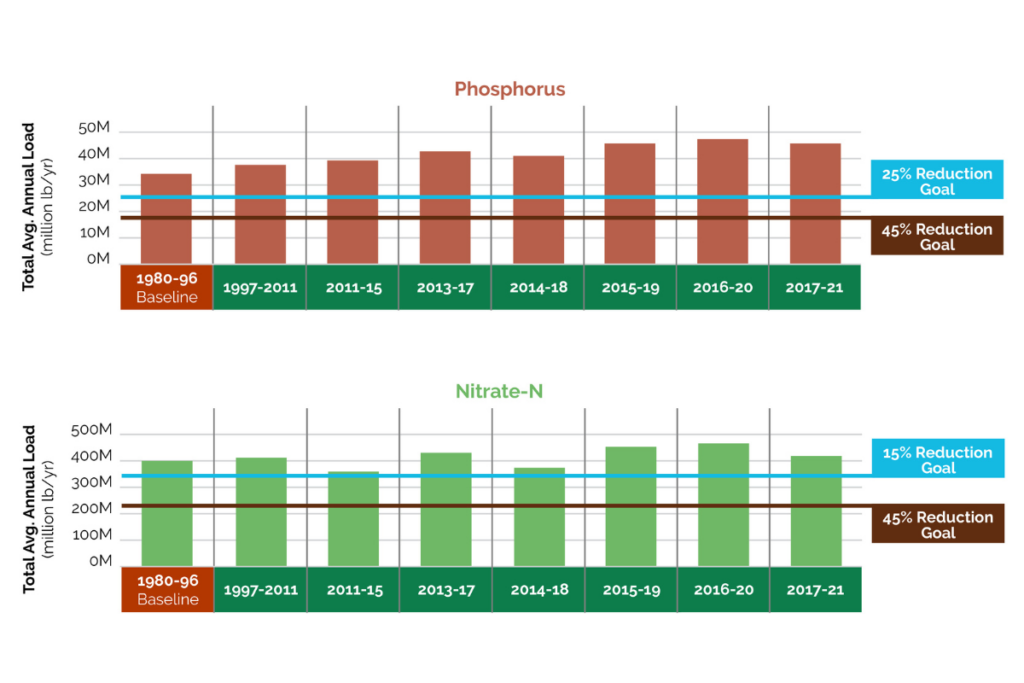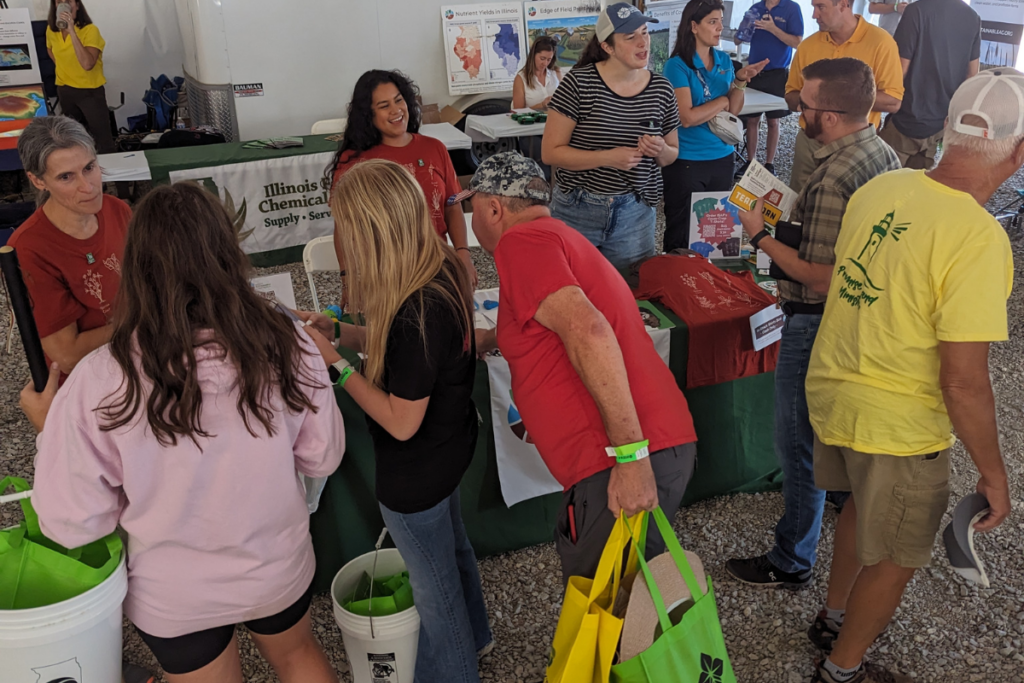Checkoff Funds Tool to Help Farmers Drive Economic and Environmental Sustainability
Sustainability has grown to become a key consideration for a wide range of purchasing behaviors across the consumer marketplace. A recent Ipsos survey found that nearly 40 percent of consumers said they would pay more for environmentally friendly products, including food.
Whether that finding translates to in-store behavior remains to be seen. But as an aspirational consumer preference, it paints a picture of opportunity for Illinois farmers, who could one day be rewarded for farm-level conservation and sustainability practices.
To support Illinois soybean farmers in those efforts, the Illinois Soybean Association (ISA) is an active partner in the Illinois Sustainable Ag Partnership (ISAP). The partnership of 19 diverse organizations, which includes Illinois Farm Bureau and Illinois Corn, recognizes that farmlevel profitability is a baseline requirement for farmers adopting new or additional sustainable production practices.
A key resource in this effort is ISAP’s Financial Incentives Database (FIND Tool), an online guide located at https:// ilsustainableag.org/findtool/. The tool helps Illinois farmers access financial incentives and support for implementing additional sustainable practices. The tool streamlines the process of finding and comparing over 60 programs designed to encourage conservation practices such as covercropping and reduced tillage.
ISA is at the heart of the initiative and is committed to helping Illinois farmers maximize yields and market opportunities while also promoting soil health, water quality and longterm sustainability. In fact, a recommendation from the ISA Soybean Production Committee led to funding from ISA for the FIND Tool’s development.
“We’re committed to connecting Illinois soybean growers to resources that support profitable grain production while protecting soil and water quality, resource resiliency and land stewardship,” said Deanna Burkhart, Producer and Field Administrator for ISA. “Illinois Soy is proud to be a leading member in the ISAP and to support the creation of valuable tools for Illinois farmers.

Graph Credit: ISAP

Deanna Burkhart, Photo Credit: ISA

Helen VanBeck, Photo Credit: ISAP
Supporting Farmers with Tools Such As FIND
Helen VanBeck, who manages ISAP, has played a key role in coordinating ISAP’s efforts. VanBeck’s agricultural background drives her passion for sustainable agriculture. Over the past three years, she has worked with organizations such as ISA to help Illinois farmers reduce nutrient loss and improve soil health.
“ISA is one of our 19 members,” VanBeck explains. “Together, we help farmers reduce nutrient loss and improve soil health while securing financial support to make those changes.”
Farmers using the FIND Tool answer three basic questions: farm location, type of operation and practices of interest. From there, FIND narrows down relevant financial incentive programs, allowing farmers to compare programs and select the best options. The feedback on FIND has been overwhelmingly positive, according to VanBeck.
“We’ve focused on listening to farmers and addressing their concerns,” says VanBeck. “Farmers and advisers alike are finding the tool incredibly useful.”
Meeting Sustainability Goals
Launched in 2017, ISAP helps Illinois farmers meet targets outlined in the Illinois Nutrient Loss Reduction Strategy (NLRS) published in 2015. The NLRS aims to reduce nitrogen and phosphorus runoff, targeted as a contributor to the Gulf of Mexico’s hypoxic zone, where low oxygen levels harm marine life. The goal is to reduce nutrient loss by a set percentage before 2025, with the longterm target of returning to 1986 baseline levels.
“The nutrient loss reduction strategy was passed in response to the Gulf hypoxic zone,” VanBeck explains. “ISA and ISAP are crucial to helping farmers meet these goals.”
Partnering with ISAP isn’t just about meeting statemandated requirements. ISA’s involvement ensures Illinois farmers stay competitive in an increasingly sustainabilityconscious market.
“It has been exciting to see it all come together,” ISA’s Burkhart says. “We are happy to support this tool and glad it is live and available. It’s a great guide to get a farmer started, a place to look and see the options open to them.”
The FIND Tool simplifies decision-making for farmers by outlining the benefits and technical requirements of conservation programs. This helps them make informed choices that can improve both soil health and long-term profitability.
In addition to the FIND Tool, Jean Brokish, an agricultural sustainability expert who serves as Midwest Region Deputy Director for American Farmland Trust, underscores the importance of ISAP as a source for mentorship as well as financial support.
“Sustainability has gained significant interest from consumers and corporations alike,” she says. “Cover crops, reduced tillage and nutrient management are backed by science and economic data, making sustainability more mainstream and beneficial for farmers. Mentorship is key. Fear of failure, particularly economic failure, is real for farmers. It’s critical to provide the tools and resources necessary to keep them economically viable while they adopt sustainable practices.”

Jean Brokish, Photo Credit: American Farmland Trust
Financial Incentives Provide a Safety Net
Programs offering financial incentives are crucial in supporting farmers through the transition to sustainable practices. Brokish explains that it can take two to three years for new practices to prove economically viable. Financial incentives help bridge this gap, giving farmers the time and resources needed to focus on making the changes work. The end goal is a wide range of improvements, such as improved groundwater recharge and habitat enhancement.
VanBeck adds that the upfront costs of sustainable practices are often a barrier.
“Farmers who have been using these practices for a few years often see economic returns, but it can take three to five years for those benefits to materialize,” she says. “Financial incentives help farmers manage the costs of transitioning to these methods.”
A Broader Conversation on Sustainability
VanBeck has noticed a broad shift in how sustainability is viewed in agriculture, especially when it comes to improving water quality. She notes that more groups are recognizing the long-term benefits of sustainable farming for both the environment and farmers’ bottom lines.
Federal funding is also making a significant impact, according to the ISAP manager. VanBeck points out that federal policies such as the Inflation Reduction Act and federal programs such as Partnerships for Climate-Smart Commodities are bringing historic levels of funding to farmers.
“This kind of money can make a big difference, and there’s a lot of interest in ensuring it reaches the right people,” she says.
This increased funding is matched by a level of collaboration among farmers, conservation experts and agricultural professionals across Illinois. ISAP’s train-the-trainer model equips farm advisers and conservation district staff with the tools and knowledge to help farmers adopt sustainable practices. This grassroots network has been effective in spreading sustainability throughout Illinois agriculture.
A Model for Other States
The success of ISAP and the FIND Tool in Illinois has caught the attention of other states looking to replicate its model. VanBeck notes that she has received inquiries from groups developing similar databases.
“We’re proud that the tool we developed in Illinois pulls from multiple funding streams and serves such a wide audience,” VanBeck says.
As ISAP and ISA continue their partnership, Illinois farmers benefit from the resources designed to make sustainable farming achievable and profitable. By encouraging collaboration, offering financial incentives and leveraging research, ISAP is building a path toward a more sustainable future for Illinois agriculture. For VanBeck, the reward is in seeing these initiatives come to life.
“It’s exciting to work with our partners like ISA and help increase practice adoption and reduce nutrient loss,” she says. “Knowing the tools we provide are making a real difference for farmers and the health of Illinois’ land and water is incredibly fulfilling.”
Additional information is available at https:// ilsustainableag.org.

ISAP team members discussing their initiatives with Farm Progress Show attendees. Photo Credit: ISAP
Recent Articles
Soybean Production
Earlier this year, the ISA Market Development Committee traveled to Southeast Asia to explore soybean meal market opportunities for Illinois soybean farmers. Learn more about the team's eye-opening experience and the many ways ISA is tapping into international markets to increase demand for Illinois soybeans.
By
Soybean Production
Earlier this year, the ISA Market Development Committee traveled to Southeast Asia to explore soybean meal market opportunities for Illinois soybean farmers. Learn more about the team's eye-opening experience and the many ways ISA is tapping into international markets to increase demand for Illinois soybeans.
By Kelly Robertson


